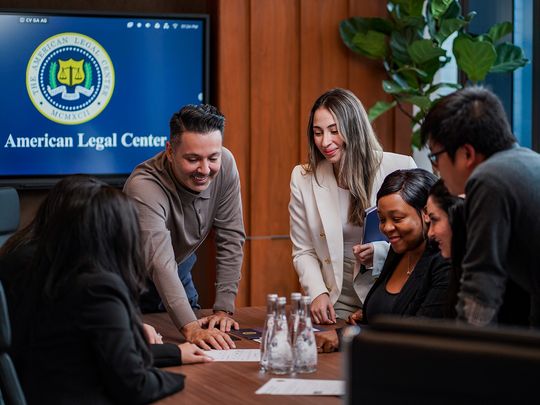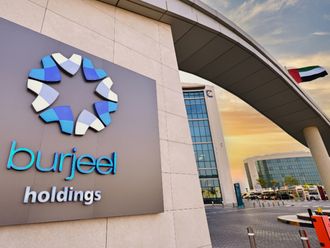
Every year, thousands of young Middle Eastern students filled with ambition and aspirations migrate to the United States to pursue the American dream. As international students, these young students face multiple challenges, such as paying higher tuition fees with no financial aid, uncertain admission prospects, and limited professional opportunities.
Shai Zamanian experienced these issues firsthand as a young Middle Eastern student in the U.S. Since then, he has spent over a decade helping students from the region secure a pathway to permanent residency in the U.S. through the U.S. Golden Visa Program. As a UCLA graduate himself, Shai believes that all international students deserve access to education in the U.S. regardless of their origins. In pursuit of his vision to help other families achieve their American dream, Shai founded The American Legal Center, the top EB-5 experts in the region, composed of a team of U.S. licensed lawyers that have specialized in the EB-5 program for over a decade. Shai offers solutions to many of the challenges international students face, such as lower tuition costs and higher employment opportunities.
What Is the U.S. Golden Visa Program?
The EB-5 Immigrant Investment Program, also known as the U.S. Golden Visa Program, requires an investment of $800,000 into a government pre-approved real estate project in the U.S. in exchange for a Green Card. The program was introduced by Congress in 1990 in hopes of rewarding foreign investors to invest in the U.S. economy. The reward of a U.S. Green Card is extended to the investor’s spouse and children under the age of 21. Through this program, the main applicant along with dependents can migrate to the U.S. and enjoy the benefits associated with being a U.S. person, such as access to world-class healthcare, educational benefits, and work authorization.
After a recent revamp of the program, EB-5 investors can file their applications and immediately move to the U.S. with their families while waiting for their approval from the U.S. immigration office. The Reform and Integrity Act of 2022 introduced a new concept called concurrent filing, which allows for a more streamlined process. Concurrent filing benefits students studying in the United States on an F-1 visa, professionals working on an H1-B visa, and many others wishing to reside in the United States while their applications are under review.
Educational benefits
One of the most sought-after benefits of the EB-5 program is the educational opportunities that it offers to international students. After acquiring status as a U.S. permanent resident, students can submit their applications to their desired university as a U.S. person. This increases the likelihood of their application being accepted.
In addition to lower acceptance rates, an issue commonly faced by many international students in the U.S. are high tuition fees and living costs. Unlike an F-1 student visa holder, a student with a U.S. Green Card has access to financial aid and scholarships from the U.S. government. The EB-5 program relieves financial burdens for international students and their families during their studies to optimize their experience as a U.S. student. For instance, the tuition fees at the University of California, Los Angeles (UCLA) for the upcoming academic year are over $53,600 for international students, while in-state students pay $19,473, highlighting a substantial difference between the two rates. A Green Card holder in California will ultimately save $136,500 over the course of their four-year degree.
Shai Zamanian expresses the importance of this program for students explaining that, “The EB-5 program gives international students the stability they need to focus on their studies and make the most of their time at U.S. universities knowing they can graduate and have work authorization. It’s a real boost for academic success.”
Employment opportunities
Further to the educational benefits, the EB-5 program offers employment opportunities to students throughout their studies and post-graduation.
Students holding an F-1 visa have limited work opportunities. In their first year, they can work on campus for a maximum of 20 hours per week. After this period, they can seek employment off-campus through Curricular Practical Training (CPT) or Optional Practical Training (OPT). However, these options still come with significant restrictions. Students are only eligible for up to 12 months of work authorization from the United States Citizenship and Immigration Services (USCIS), and their residency in the U.S. depends on the approval of their university.
As a U.S. person, students are eligible to work for any U.S. employer without the need for sponsorship. Their ability to remain in the U.S. during and after their studies is secure when compared to F-1 student visa and H-1B temporary employment visa holders. In contrast, the EB-5 program provides students with the flexibility to shape their career paths both during and after their studies.
Contact The American Legal Center to become a U.S. student
At The American Legal Center, Shai and his team of U.S. licensed attorneys continue to help students and their families migrate to the U.S. and enjoy the benefits of U.S. Green Cards through the EB-5 program. By virtue of obtaining the U.S. Golden Visa, students can enjoy a secure future in the U.S. while benefiting from flexible employment opportunities. Shai and his team can assist in navigating and guiding students to safeguard their future in the U.S. with a complimentary consultation. Contact their team today to secure your consultation in their offices in Downtown Dubai.







